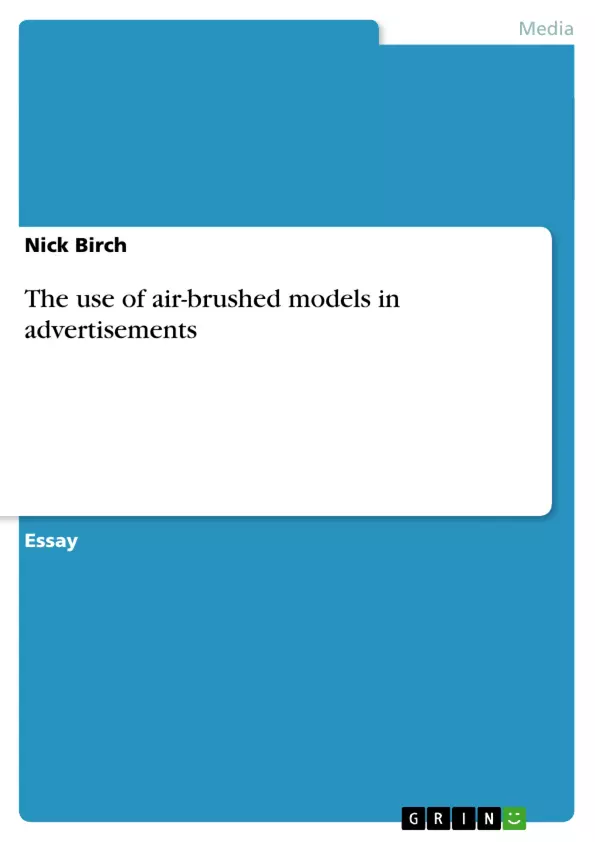It is of no contention that the air-brushing of models in advertisements has been a central issue amongst body image advocates. Re-touching images of people has created problems for body-conscience individuals as well as advertisers although it is questionable whether the significance of the problems has yet outweighed the advantages of the practice. Part of the ethical responsibility of designers is to be aware of the effects their designs have on people, but there may be times when designers do not have a choice. Advertisers respond to the market in a supply-and-demand manner and will continue to deliver images that are successful, or more aptly recognised: as profitable.
Design critic Alice Rawsthorn categorises ‘most graphic design ... as “quietly good design”, (that is, we never) really stop and look at it in the way that we might stop and look at a painting or a work of art. We absorb the messages, but only rarely take time to look at how the message has been constructed. In other words, we gulp the wine, but never look at the glass’ (Shaughnessy, 2008). It is interesting that the glass that delivers images of people in particular gains so much attention.
Inhaltsverzeichnis (Table of Contents)
- INTRODUCTION
- SUBSTANTIATING STRATEGIES
- PRACTICE MAKES PERFECT
- THE LKS TOPELLING
Zielsetzung und Themenschwerpunkte (Objectives and Key Themes)
This text explores the ethical implications of airbrushing models in advertising, specifically focusing on the impact on body image and the role of advertising agencies and consumer expectations. The author investigates the arguments for and against the practice, drawing on research, case studies, and industry perspectives.
- The ethical responsibility of designers in creating images that influence body image
- The economic forces driving the use of airbrushing in advertising
- The impact of digitally altered images on consumer perception and self-esteem
- The role of self-regulatory bodies and industry codes of conduct in addressing the issue
- The potential for advertising to promote positive body image and health
Zusammenfassung der Kapitel (Chapter Summaries)
- INTRODUCTION: This chapter introduces the topic of airbrushing models in advertising, acknowledging its controversial nature and the ethical concerns raised by body image advocates. The author highlights the tension between the desire for profitable advertising and the potential negative consequences of unrealistic portrayals of bodies.
- SUBSTANTIATING STRATEGIES: This chapter examines the arguments for and against airbrushing in advertising. It explores the research linking digitally altered images to body dissatisfaction and unhealthy eating habits. The author also discusses the role of consumer cynicism, the importance of advertising accountability, and the development of self-regulatory bodies like the Advertising Standards Agency.
- PRACTICE MAKES PERFECT: This chapter delves into the reasons why advertisers use airbrushing, arguing that the practice is often driven by market research and profitability. The author also analyzes the potential for ethical dilemmas when advertisers promoting health and well-being engage in airbrushing to enhance the perceived body size or healthiness of models. This chapter also touches on the idea that airbrushing is now a pervasive practice in advertising, extending beyond models to products like cars and food, and that the issue lies in the distortion of body image, not airbrushing itself.
Schlüsselwörter (Keywords)
Airbrushing, advertising, body image, consumer perception, ethical responsibility, self-regulation, industry codes of conduct, media influence, digital enhancement, health and well-being, unrealistic portrayals, market research, profitability, body dissatisfaction, supply and demand.
- Arbeit zitieren
- Nick Birch (Autor:in), 2011, The use of air-brushed models in advertisements, München, GRIN Verlag, https://www.hausarbeiten.de/document/269680


